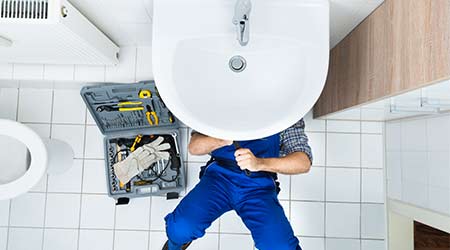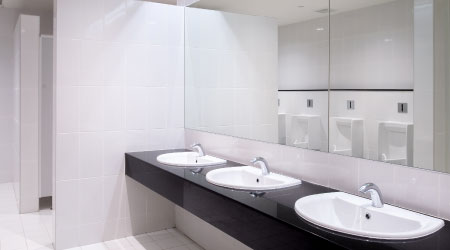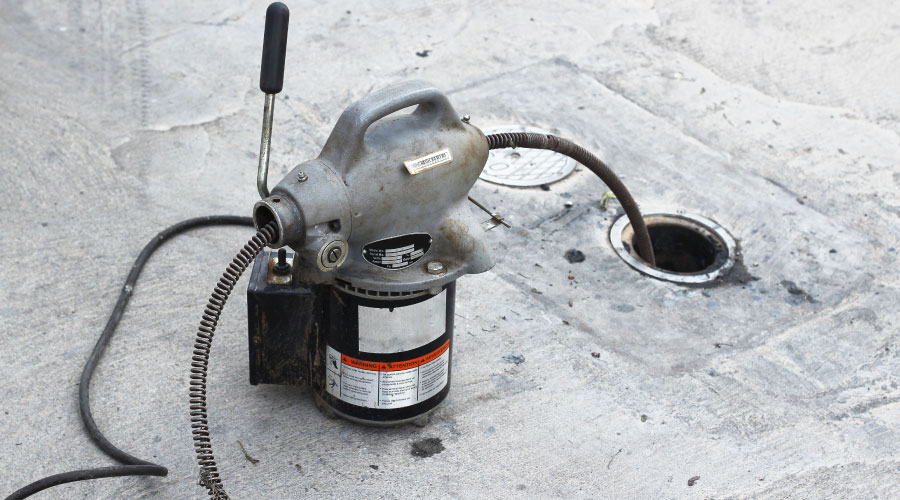 With a number of strategies at their disposal, managers overseeing aging plumbing systems no longer need to wait for an unexpectedly high water bill caused by faulty fixtures to determine that pipes and fixtures are the sources of the problem.
With a number of strategies at their disposal, managers overseeing aging plumbing systems no longer need to wait for an unexpectedly high water bill caused by faulty fixtures to determine that pipes and fixtures are the sources of the problem. Plumbing Systems: Repair or Upgrade?
By monitoring system condition and water use, managers can determine the best course of action for systems and the bottom-line.
Plumbing and restroom systems present maintenance and engineering managers with a host of daily and long-term challenges related to repairs, hygiene and water waste. With updated fixtures — including flush valves, faucets, and toilets — restrooms also offer maintenance and engineering managers opportunities for improved savings and performance.
What is the tipping point? When do managers decide that upgrading fixtures is a smarter decision that continuing to repair them? By identifying common problems with plumbing fixtures that can indicate long-term problems and by comparing data on repair costs vs. upgrade costs combined with projected savings, managers can make smart repair-or-upgrade decisions.
Finding trouble
There does not seem to be an end to the common problems with plumbing systems and fixtures — noisy pipes, sticking valves, dripping fixtures that will not close all the way, excessive water use, water hammer, continuous water flow in piping after shut-off, and leaks in pipe walls, valve packing, and fixture seals. Among the restroom-related plumbing problems are restroom odors indicating potential hygiene issues, pump and ejector failures, clogs, backups, overflows, and tree root invasion.
For managers and front-line technicians, there is good news: Considering the number of times plumbing fixtures cycle on and off during their lifetimes, they are very robust and last a long time with proper and timely inspection, care, and maintenance. The bad news is that when departments ignore aging systems, fixtures can cause costly problems. With a little attention, technicians can solve these problems, adding considerably to reliability, water efficiency, and cost savings.
In a commercial or institutional facility with hundreds of plumbing fixtures, the hunt for a mysterious whistle can go on intermittently for months before a technician can identify the culprit — maybe a worn toilet tank water valve seat that was pouring hundreds of gallons per hour directly into the sewer.
With all those fixtures to inspect, how can technicians shorten the time to do the detective work? Here is where preventive maintenance (PM) and predictive maintenance (PdM) pay off. Inspecting fixtures periodically — as well as repairing, replacing, or upgrading valves when needed — not only solves the immediate problem. It also provides six additional benefits.
It reveals other hidden issues, lowers the amount of waste, eliminates a nuisance noise that probably causes complaints and unneeded stress, improves system reliability, improves hygiene, and establishes a useful history for future repair-or-upgrade decisions.
Related Topics:














